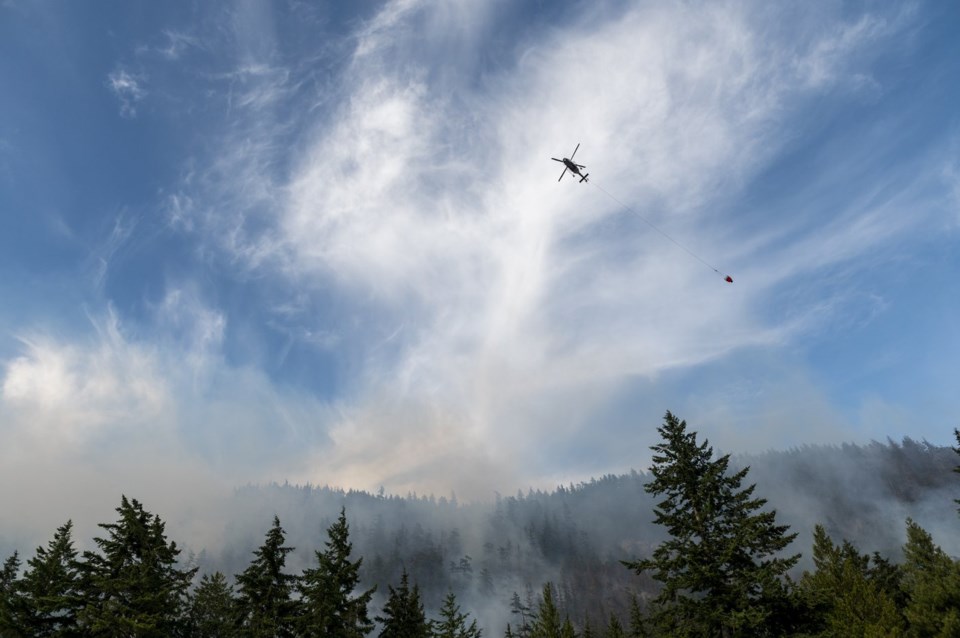Firefighters are marking success in opposite corners of British Columbia after favourable weather this weekend allowed crews to rein in two prominent fires that have triggered evacuation orders and alerts.
The BC Wildfire Service says crews remain on the scene in Squamish, B.C., to extinguish hot spots from the Dryden Creek fire, which was declared to be no longer out of control on Saturday.
The progress in the firefight means evacuation alerts for homes closest to the blaze have been lifted with the exception of those along Dryden Road east.
The wildfire service says cooler temperatures this weekend allowed crews to decrease fire behaviour and conditions are forecast to remain cool and damp, with rain expected on Wednesday, as aircrews continue bucketing operations.
The Dryden Creek fire about 60 kilometres north of Vancouver had triggered a local state of emergency in the District of Squamish last week, and was declared as "being held" on Saturday.
The wildfire service meanwhile says flames are no longer visible from the Kiskatinaw River fire in the northeast corner of the province, after it was doused with more than 20 millimetres of rain over the weekend.
But BC Wildfire Service fire behaviour analyst Neal McLoughlin says in a video posted Sunday that "that doesn't mean the fire isn't active underground" so crews remain on scene.
The blaze is still rated as out of control, and it is one of three wildfires of note in B.C.
"When we receive this amount of rain on a fire, it's going to take several days of hot, dry conditions before our fuel moisture conditions recover and allow the fire to become active on the surface again," McLoughlin says in the video.
"So this change in weather has really given us the upper hand for the next week to get ahead of fire suppression activities."
But, he notes, the northeast has been "experiencing several years of drought," so while the rain improves firefighting conditions, the landscape is still receptive to fire.
"Twenty millimetres of rain is wonderful, but we know there's hot spots still within the fire perimeter, and we also know that there's deep underlying drought, and so within a week of drying conditions, we could see active fire on the surface again, and for that reason, we need to maintain active fire suppression over the weeks to come and wrap this fire."
This report by The Canadian Press was first published June 16, 2025.
Brieanna Charlebois, The Canadian Press




